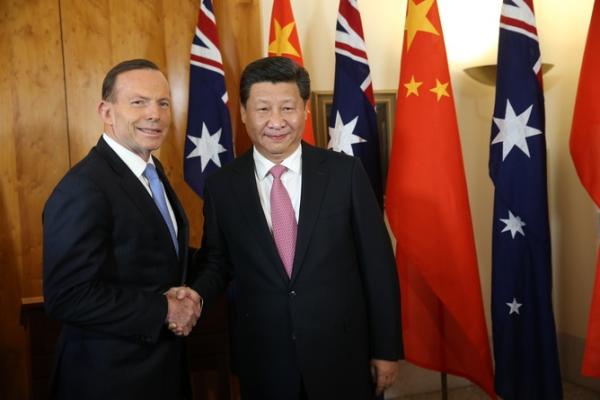
James Laurenceson, Deputy Director, Australia-China Relations Institute, University of Technology Sydney |
This article appeared in The Conversation on November 17 2014.
Today’s completion of free trade talks with China has been ten years in the making. Australia already has free trade agreements (FTAs) with Japan, the United States, Korea, Singapore and New Zealand. However, data from the Department of Foreign Affairs and Trade shows that, by the end of last year, China’s share of our exports was greater than these five countries combined - 32% compared to 29%.
It is hard to overstate just how much our living standards have come to rely on China. Between 2008 and 2013 the annual value of exports to China rose by A$64.7 billion. Meanwhile, those to all other countries went backwards by A$21.8 billion.
This negative export trend included traditional destinations such as Japan, which was down by A$3.7 billion, as well as up-and-comers such as India, down by A$4.9 billion. The jump in exports to China accounted for 20% of the increase in our GDP, the total value of goods and services produced.
Right now, though, after hitting a record high of A$100 billion in April, our goods exports to China are beginning to sag. The latest data from the Australian Bureau of Statistics shows their value has declined for five straight months. There is a simple explanation: the big iron ore producers have flooded the resources market, causing prices to tank.
At the same time, China’s economic growth has moderated in line with the government’s plans to pursue a more balanced development strategy.
While China’s voracious demand for natural resources over the past decade was always bound to slow, the outlook for the sector remains positive. This is particularly so now that coal tariffs have been scrapped. The Bureau of Resources and Energy Economics expects Australia’s exports of resources and energy products to increase by a further A$80 billion by 2018-19.
Yet with Australia’s exports to China now under more strain than at any other time over the past decade, a FTA offers much-needed relief. It will broaden the trade relationship - beef producers in Kilcoy, dairy farmers in Gippsland and services providers across the country will all be celebrating tonight. That said, a FTA should be seen as an entrée to what could be an eight-course Chinese banquet.
The big story in the coming decades will be the rise of China’s middle class - conceivably growing by 850 million by 2030. That is more than six times the population of our second-largest export customer, Japan. A FTA with China is crucial to reaping the full dividend this event offers, but more is needed.
Consider agribusiness, a national strength identified in the Industry Innovation and Competitiveness Agenda released by the Abbott government in October. Average tariffs of around 17.5% are one barrier Australian agricultural producers face when seeking to sell their products in China. A FTA takes care of this one.
Yet another problem is looming. A 2012 report found that while Australia has the land and skills to profit from Asia’s booming demand for high-quality food, we are short of capital. It is estimated an annual investment gap of A$9 billion exists today. That means dollars are already slipping through our fingers.
In theory, there is an easy fix: partner with a country that has excess capital and would welcome our agricultural products on its supermarket shelves. It is not hard to guess which country that might be – last year our food exports to China rose by 60%.
However, Chinese investment in Australia’s agricultural sector has all too often been seen as “selling the farm”. The experience on the ground has been very different.
When Chinese company COFCO took an equity stake in Tully Sugar in 2011 the fear was that locals would lose their jobs to imported Chinese workers and all output would be shipped back to China. What actually happened was that the existing workforce was kept, the mill received a A$14 million facelift and North Queensland sugar continues to be sold globally.
We have seen the same model successfully at work in other sectors of the economy. In 2011,
China’s Sinopec became a foundation customer to Origin Energy’s Australia Pacific LNG project in a deal worth A$90 billion over 20 years. The following year it invested another 25% of the project’s A$24.7 billion dollar capital cost to get things running. It is expected the project’s first shipments from Gladstone will be in 2015.
For China it is all about profiting from a growing pie. This can only happen if its companies bring deep pockets, employ local workers and adhere to Australia’s labour, environmental and taxation laws.
The challenge for Australia is to understand this and meet China half-way. We need to see China as more than just a customer and embrace it as a partner.
Author
Professor James Laurenceson is Deputy Director of the Australia-China Relations Institute at the University of Technology Sydney.


